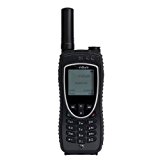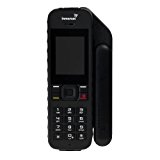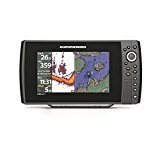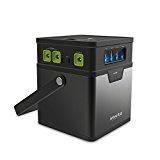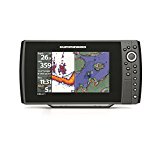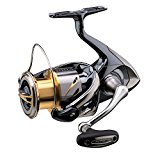Fish Finder, GPS, Satellite Phone – Electronics Gear
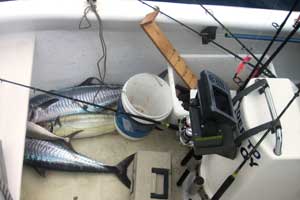
Technology influences our lives and everything we do and not surprisingly the impact on the sport of fishing has been huge.
We’ve reviewed marine electronics for fishing and fishing safety. You’ll find information, advice and recommendations here.
|
|
Satellite Phone
We recommend taking a satellite phone for areas that don’t offer cellular coverage.
When traveling to remote locations to fish, the advantages of a satellite phone make it a safety essential. Unlike any other device, these phones function like any other phone device and unlike other long-range communications devices, they are compact, though a little larger than standard cell phones today.
They’re close to the size of a portable home phone, with the exception of it’s oversized antenna.
There are 3 types of satellite phones:
1. Iridium
This is the only plan that provides a dial tone regardless of where you are in the world. This phone is perfect for voice conversations and limited data communications.
Iridium Extreme 9575 Satellite Phone with protective case
- lightweight and heavy duty model
- water, blowing rain and shock resistant
- good battery life
Prepaid satellite phone plans
Iridium phone plans are available with a range of minutes and validity options. For example, 200 minutes with a 6 month validity for around $200
Good value option: If traveling extensively the prepaid Iridium phone plan packages offering global coverage, with a choice of data, voice minutes, text message combination and the option to roll-over unused airtime
2. MSAT
- These phones are ideal for fishing excursion in Northern and Central America and are ideal for packet data transfer or dispatch radio.
3. Inmarsat
- A close competitor of the Iridium system it offers near-global coverage and is considered ideal for those requiring high-speed data alongside voice communications.
- user friendly
- dust, splash, shock resistant
- operates at -20 degrees to 50C
- gps tracking and emergency buttons
- cheaper than Iridium
Cost of satellite phone packages vary, depending on the options, like protective cases that you might want to include. Prepaying for the data can save you considerable $.
You can buy prepaid sim cards for the Inmarsat phone at less than $1 a minute for 50 minutes.
While the cost of a package, can seem expensive for a weekend trip, phones can be rented quite cheaply. When stuck in the Canadian arctic region, that can spell the difference between being stranded and getting home on time.
Sonar
How to choose the best fish finder
The basic idea behind sonar is that it will locate fish and display their depth and numbers on screen. However, the difficulty in finding the right sonar device is because of the number of units and variety of combo units that include both sonar and GPS.
Deciding on the best one to buy depends on several key factors:
- color or grey scale
- resolution
- dual or single beam
Each sonar device displays the resolution either as 480 or 480 x 480. This refers to the number of pixels or dots across the top of the display. The more dots, the greater detail that screen can display. This is very similar to the camera rating of megapixels with 8 megapixels being an order of magnitude much greater than one mega pixel. Therefore, go with the larger number.
- We recommend a 480 or 480×480 (or better) sonar device.
The difference between a dual beam and single beam is quality.
2 beams provide better quality and more detail than a single beam sonar device. Essentially, a dual beam can see 60 degrees of sonar coverage whereas a single beam can only see 20 degrees of coverage.
The Hummingbird fish finder offers
- a massive diagonal of 9″ display
- pixel resolution is 480 x 800
- dual beam plus/side and down imaging
The next question is a matter of color versus grey scale. Color display looks very good, but they often contain less detail than the grey-scale version and cost considerably more.
The key to deciding on a grey scale sonar device is the bit level. Again, the higher the number, the more colors. The most common grey-scale sonar devices are 4-bit and 8-bit. While the 8 bit may seem to offer only 4 more colors, this is further from the truth.
| Note: A 4 bit is capable of displaying 16 shades of grey and not very good at giving out a lot of detail. An 8 bit device can display as many as 255 shades of grey and therefore offers much higher detail. |
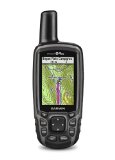 Global Positioning System (GPS)
Global Positioning System (GPS)
What is a GPS?
A Global Positioning Satellite receiver uses satellite information to precisely position your location from a series of 24 satellites that orbit the earth. The more satellites it can communicate with, the more accurate the reading.
With the price of these units dropping, they’re now affordable to any angler. And with such a variety of GPS units, they serve multiple purposes and some even combine with sonar to provide not only the location of the fish in the water, but in terms of your position on the earth.
Advanced devices allow the mapping of marking of a spot that can be later downloaded into your computer for analysis and trending.We recommend a GPS receiver as an essential tool when fishing Canada’s remote back country, for example, as cell coverage is spotty at best.
However, a GPS is only as good as it’s power source. Make sure you carry extra batteries or a portable power supply to supplement the charge.
Many electronic devices such as GPS receivers take time to learn. Make sure you’re familiar with the device before starting on your trip and understand its operating restrictions.
- Does it work in cold winter conditions?
- Does it float?
- If it gets wet, will it still work or short out?
Portable Power
Instead of taking several pounds of batteries, consider low wattage portable panels. These compact units supply several watts of power and provide enough power to charge phones, batteries and even run small appliances including radios.
These electronic devices are affordable and a good back up.
Consider taking this device along with your satellite phone, cell phone and radio.
All-Weather Digital Camera
While not an essential device, they’re great for recording the fun factor. Modern cameras and phones offer the ability to record video alongside images.
Keep in mind many of these cameras are battery pigs so having a solar panel/portable power supply or a 48 pack of batteries is required should you want to take an hour of video. If you only want to take standard pictures, bring about 16 batteries.
Outside of the power requirements of these devices, the next most important feature is the ability to take quick pictures. Some cameras and phones can take a second or two to focus and shoot. Not good for taking a picture of a fast moving fish as it jumps through the air.
Choose a camera that can operate in all weather conditions from rain to snow and deal with temperatures of -20 and below for those who enjoy ice fishing. You’ll want a camera that can quickly react and deal with all light conditions and has a fast shutter.
A 6 megapixel camera is sufficient. 6 levels of zoom is becoming the norm, and while a good quality, it’s not essential unless you plan to take pictures from a distance.
The ability to edit and crop images is not important, this can be done when you get back home. Both Mac and Windows offer basic cropping software with the operating system.
A 2 gigabyte memory stick should be sufficient for taking just images and photos. Should you want to take a lot of video, consider a 1 or 2x 4 gig memory SD cards.
Cellular Phone
Cell phone packages cost as little as US$10 a month for pay as you go plans. Before starting off on a trip, ensure that there’s cellular coverage in the area you’ll be traveling.
Check on the fees if you are heading out of your coverage network or entering another country. Some local carriers don’t have agreements with other countries or are compatible with their networks.
We recommends taking your cell phone when ice fishing and calling in periodically. Invest in a satellite phone if coverage isn’t reliable.

